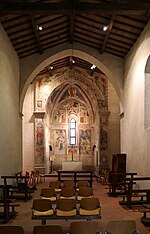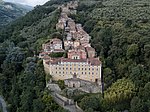Paper Museum in Pescia

The Paper Museum in Pescia (Tuscany, Italy) (Italian: Museo della Carta di Pescia) is the only museum in Tuscany that records, documents, protects, and passes down to the public the art of handmade paper. Its purpose is to preserve the ancient art of processing and manufacturing handmade paper and to raise awareness of the importance and evolution of paper production.Founded in 1996 by public and private bodies and companies making part of the Pescia Onlus Paper Museum Association, it has its headquarters in the eighteenth-century Cartiera Le Carte, purchased in 2003 by such Association. In 2021, the Museum was recognized as a Museum of Regional Relevance by the Tuscany Region and was included in the National Museum Network. The museum preserves about 7,000 pieces including paper filigree shapes, filigree waxes, punches, metal sheets, and stamps, and 600 linear meters of documents relating to the Ancient Magnani paper mills of Pescia which make up the Magnani Historical Archive. It is part of La Via della Carta in Tuscany, a project aimed at establishing a wide system of paper industrial archeology spread in the provinces of Lucca and Pistoia, carried out in collaboration with the Lucca paper district.
Excerpt from the Wikipedia article Paper Museum in Pescia (License: CC BY-SA 3.0, Authors, Images).Paper Museum in Pescia
Piazza della Croce,
Geographical coordinates (GPS) Address Nearby Places Show on map
Geographical coordinates (GPS)
| Latitude | Longitude |
|---|---|
| N 43.92957 ° | E 10.69162 ° |
Address
Enrico Magnani Pescia
Piazza della Croce 1
51017
Tuscany, Italy
Open on Google Maps









